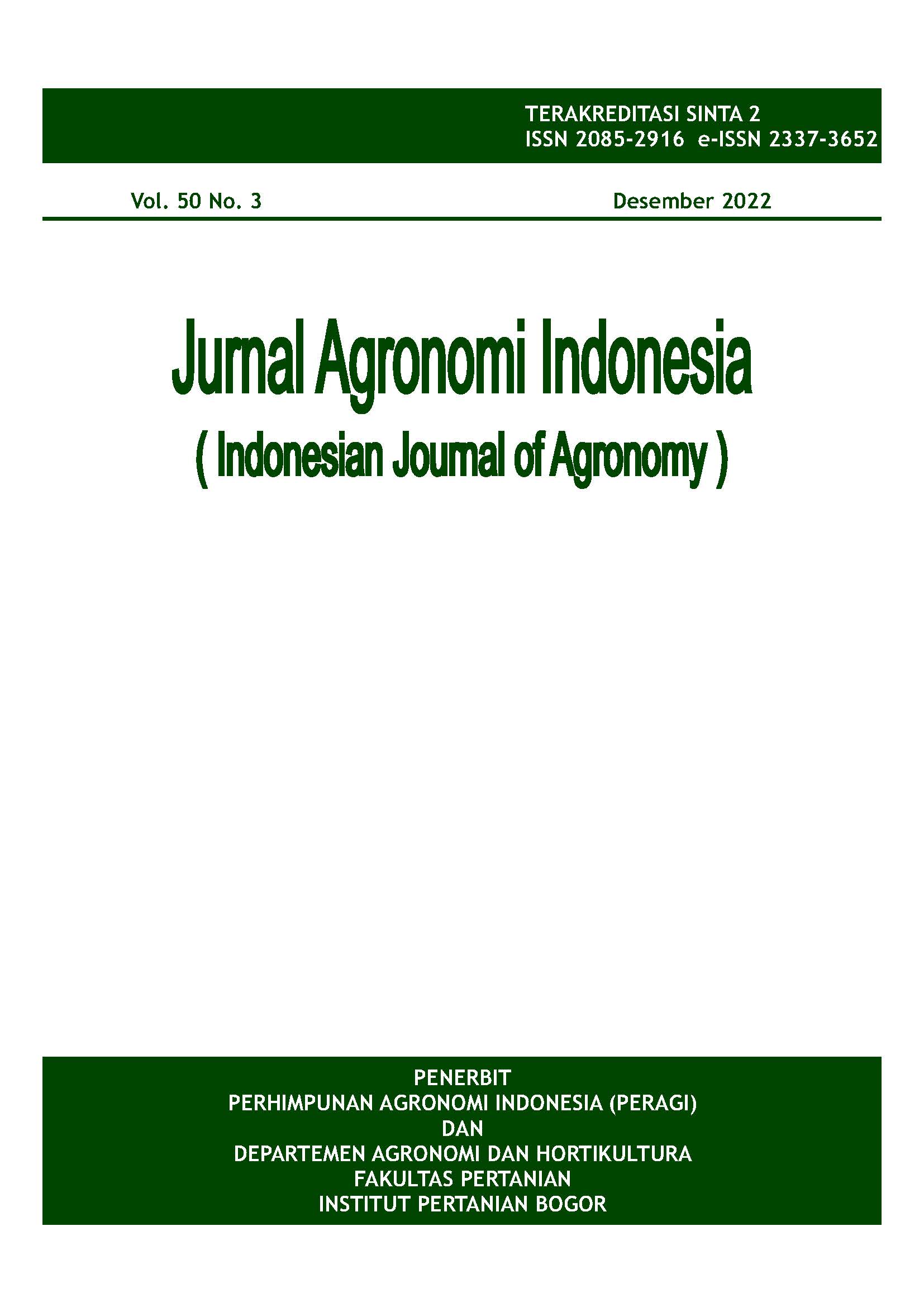Agro-morphological Traits and Seed After-ripening Period of Potential Rice Landraces from Timor-Leste
Abstract
The freshly harvested rice seeds generally do not readily germinate due to after-ripening that will naturally disappear after a certain period. This study aimed to investigate the agro-morphological traits and the period of seed after-ripening of five potential landraces of Timor-Leste. The experiment was conducted during April 2018-November 2019. Agro-morphological traits were observed in a paddy field at Caibada Village, Baucau District, Timor-Leste. The seed after-ripening was observed at the Seed Testing and Storage Laboratory, Department of Agronomy and Horticulture, IPB University. The experiment was arranged in a completely randomized design (CRD) with two factors and four replications. The first factor was 5 landraces of Timor Leste, i.e., Hare R-oitu, Fos Mean, Hare Belit, Hare Nona Portu, and Ale Mamea Ula Lesa. The second factor was the storage period, i.e., 2, 3, 4, 5, 6, 7, and 8 weeks after harvest. The result showed that the plant height of the five landraces is categorized as semidwarf (76.3-105.50 cm), medium maturity (129-141 DAS), and high tillering ability (17.5-53.50 tillers), except Ale Mamea Ula Lesa. The productivity of the five landraces is potentially high ranging from 8.1-9.8 tons/ha. The after-ripening period of Hare Belit and Hare Nona Portu landraces was terminated at 2 weeks after harvest (WAH), Hare R-oitu at 6 WAH, whereas Ale Mamea Ula Lesa and Fos Mean at 8 WAH. The longer the seeds are stored the ratio of ABA/GA3 content decreases from a range of 0.53-1.22 ppm at 2 WAH to 0.45-0.93 ppm at 4 WAH. Hare Belit and Hare Nona Portu are potential landraces to be established as national varieties in Timor-Leste for low land and medium land respectively.
Keywords: characterization, the intensity of dormancy, germination percentage, seeds quality













